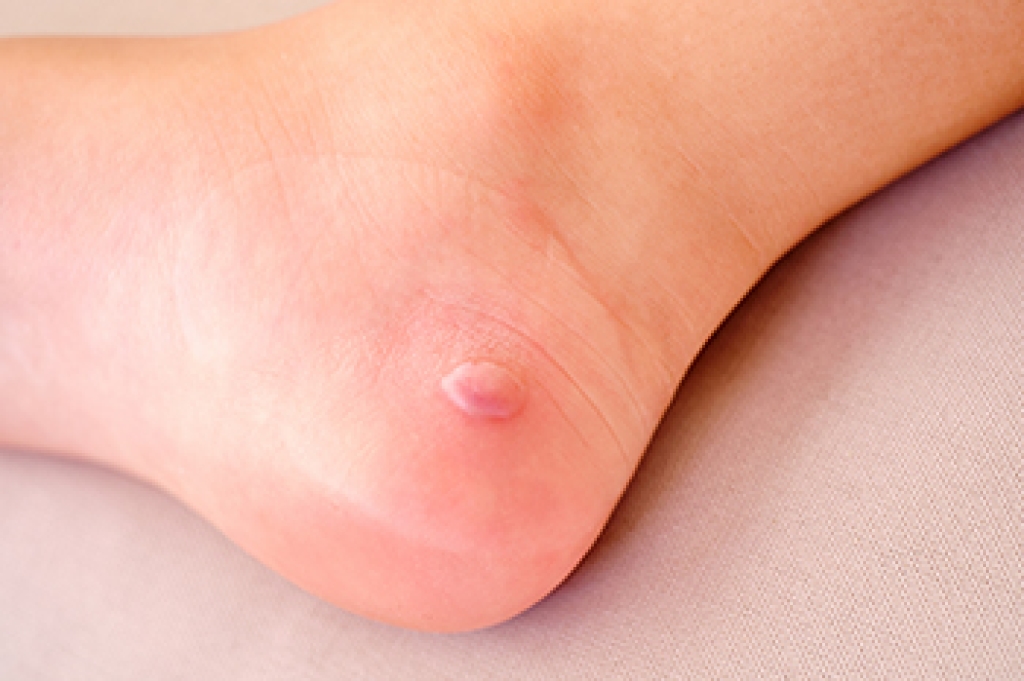
Blisters are small pockets of fluid that form on the skin, often caused by friction, heat, or irritation. On the feet, blisters commonly appear due to wearing ill-fitting shoes, excessive walking or running, or prolonged exposure to moisture. Symptoms include raised, fluid-filled bumps that may be clear or cloudy, accompanied by redness, pain, and tenderness. Blisters can feel tight and uncomfortable, making walking difficult. If left untreated, blisters can rupture, leading to possible infection or increased pain. A podiatrist can help diagnose the cause of persistent or severe blisters and recommend appropriate treatment. Treatments may include protecting the blister with specialized dressings, draining larger blisters safely, and addressing the underlying issues such as footwear or gait problems. Preventive advice and care can reduce the risk of future blisters. If blisters are frequent, painful, or show signs of infection, it is suggested that you schedule an appointment with a podiatrist to ensure proper care and healing.
Blisters are prone to making everyday activities extremely uncomfortable. If your feet are hurting, contact Christopher Murphy, DPM of Murphy Foot and Ankle Medicine and Surgery. Our practitioner can provide the care you need to keep you pain-free and on your feet.
Foot Blisters
Foot blisters develop as a result of constantly wearing tight or ill-fitting footwear. This happens due to the constant rubbing from the shoe, which can often lead to pain.
What Are Foot Blisters?
A foot blister is a small fluid-filled pocket that forms on the upper-most layer of the skin. Blisters are filled with clear fluid and can lead to blood drainage or pus if the area becomes infected.
How Do Blisters Form?
Blisters on the feet are often the result of constant friction of skin and material, usually by shoe rubbing. Walking in sandals, boots, or shoes that don’t fit properly for long periods of time can result in a blister. Having consistent foot moisture and humidity can easily lead to blister formation.
Prevention & Treatment
It is important to properly care for the affected area in order to prevent infection and ease the pain. Do not lance the blister and use a Band-Aid to provide pain relief. Also, be sure to keep your feet dry and wear proper fitting shoes. If you see blood or pus in a blister, seek assistance from a podiatrist.
If you have any questions, please feel free to contact our office located in Edgewater . We offer the newest diagnostic and treatment technologies for all your foot care needs.
